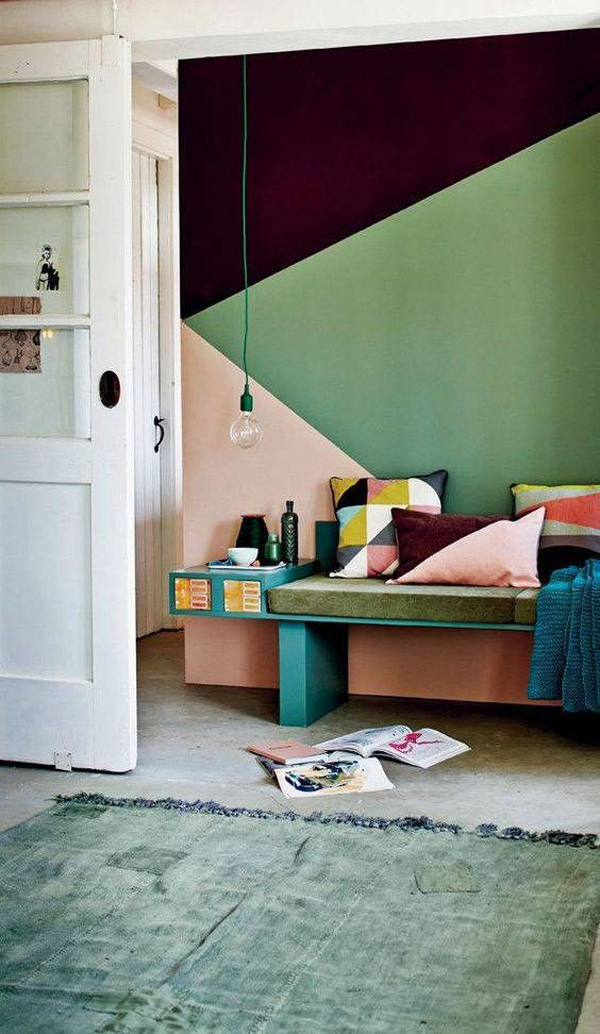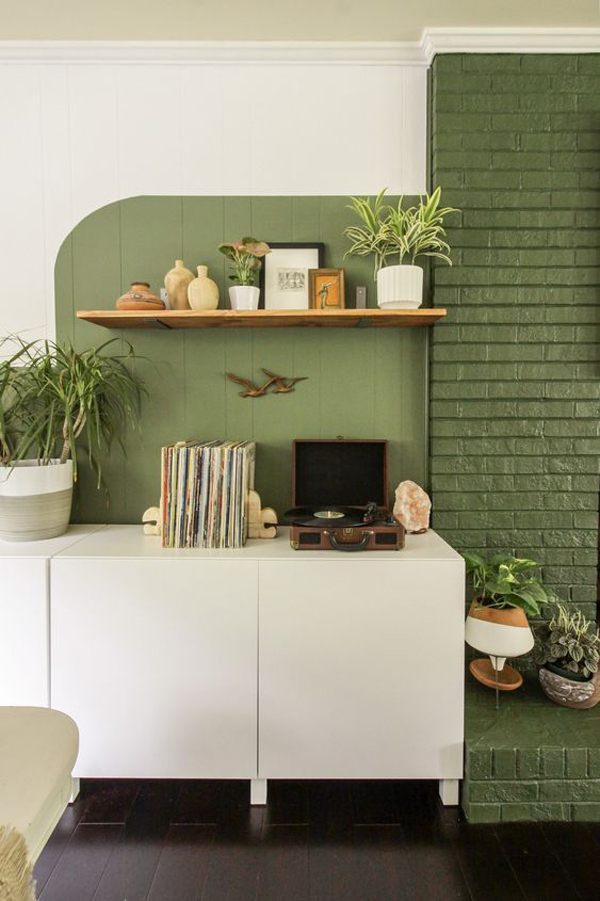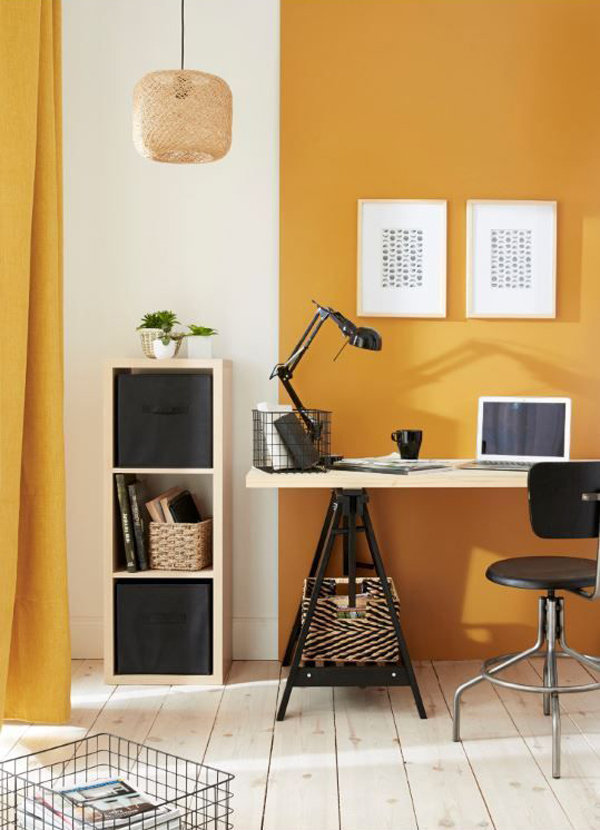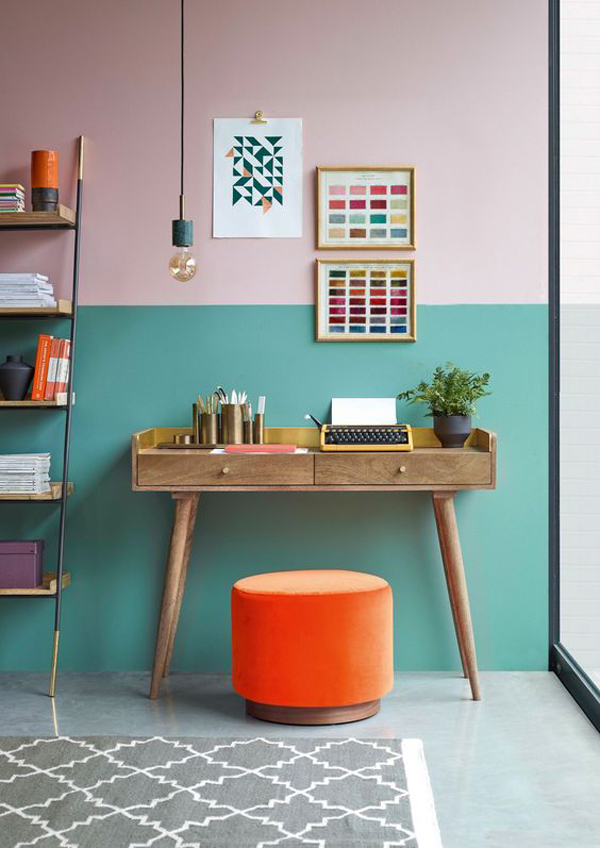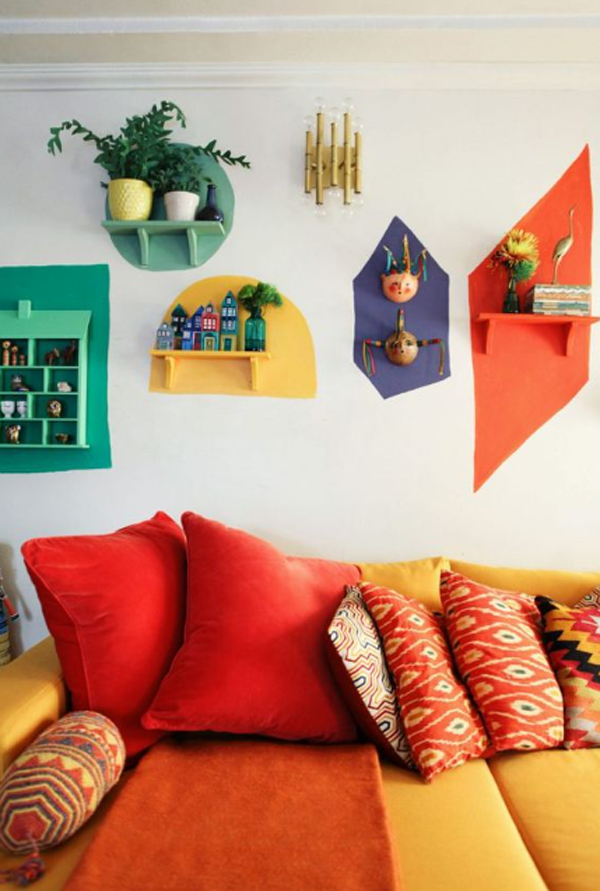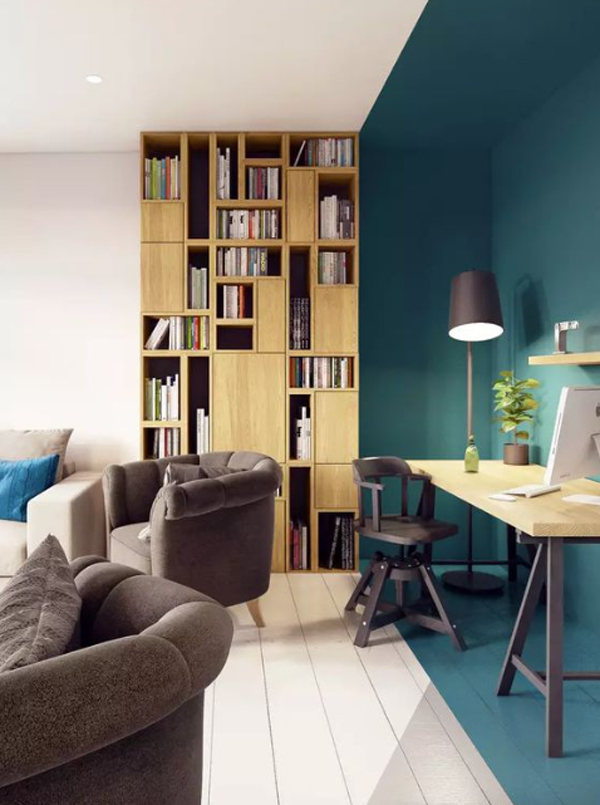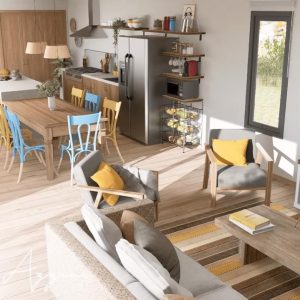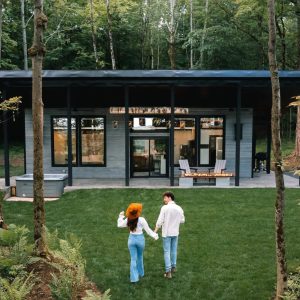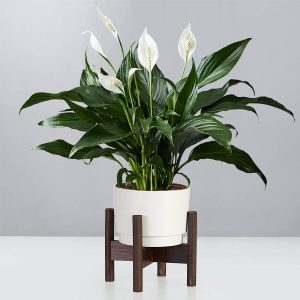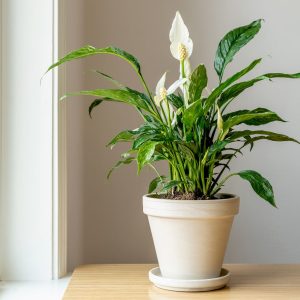
Dividing rooms at home is indeed effective for separating the functions of certain spaces while giving you a little privacy. However, when it comes to a small room and there aren’t any wall boundaries then you can play with the idea of color blocking. This is the easiest way to help you separate and classify spaces in a fun way without disturbing the natural flow in your home.
There are many creative ideas for adding color blocking to your space, you can visually carve out your home office, make a statement on your walls, and any room. You can even get an aesthetically pleasing headboard, and find ways to brighten up your wall shelves. Create all this with your favorite paint, painting or wallpaper.
For those of you who live in tiny dwellings or limited space, this color blocking idea is the best solution for creating visual separation. Thus, eliminating the need for physical dividers or room-filling walls. Here’s a cool way to make your room cozier with color blocking ideas. Let’s see together!

Shows the personality of its inhabitants
I believe people who like to play with interior color mixes are creative people. So, color blocking is one fun and creative way to add personality, and fun to your space. This is also an opportunity to show your style as well as create a piece of art that forms part of your home décor. Usually color blocking uses a mix of bold and bright colors. However, you can also make it softer by choosing muted and pastel colors.

What is color blocking?
In a nutshell, color blocking is an interior trend of mixing opposite colors to create interesting and complementary color combinations. In interior design, color blocking refers more to the use of bold patches or blocks of color, on one or more walls in the house. At first glance it is similar to making an accent wall, but more varied in the use of colors on a smaller scale. Color blocking is usually used to divide a room or part of a statement wall.

Applying color blocking to the interior
If you thought color blocking was complicated, it’s actually a lot easier than you think. First, decide on the layout and paint colors you want to use, whether it’s a bold colorful look or a softer accent color? Keep in mind, beautiful color blocking uses shades of the same color or tone. If you’re sure, it’s time to map your layout onto the wall using masking tape and then start painting your wall blocks. When finished, remove the masking tape and carefully fill in the gaps between each joist.
If you like playing with color and want to add this technique to zone or divide living spaces, please scroll down and get more inspiration!
